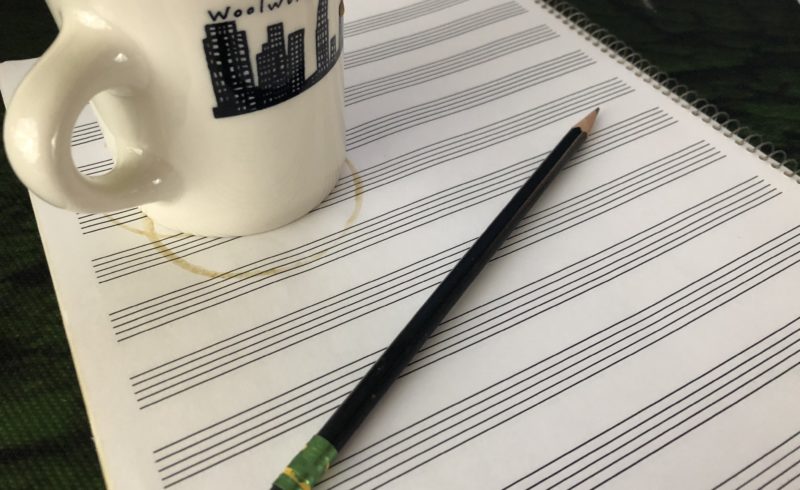
The inverse ratio rule has been part of copyright law for a long time, but sooner or later hopefully we can agree that it never really made a lot of sense and we should just let it go.
And to illustrate we’ll take the two most interesting copyright infringement cases in recent memory; one that flat out went wrong and the other that went right but for wrong reasons and is now headed back to court for the wrong reasons. Both get my goat for all sorts of reasons, but today I’ll just stick to highlighting this one — the inverse ratio rule.
The inverse ratio rule, established by the Ninth Circuit (the San Francisco based US Court of Appeals), makes a ratio of the two basic requirements needed to establish copyright infringement, “access” and “similarity.” These two things are pretty easy to understand. “Access” means “Did the accused infringer hear Song A before writing Song B? (Because you can’t have copied Song A if you’d never even heard it, right?”) And “similarity” asks the more essential question, “Is song B very much the same as song A?” But also it asks, less simply, “Is song B so very much the same as song A that it could not be coincidence; that we should probably assume the defendant had to have heard song A first, even if they don’t realize it?”
The inverse ratio rule takes those two things — access and similarity — and reasons that the more similarity you can prove, the less access you should need to prove to make your infringement case; and vice versa.”
What’s so dumb about that? It’s the vice versa — the inverse part for which its named!
Yes, it is true that at a certain point two songs being extremely similar leads to a reasonable inference of access. Sure, as similarity between two works approaches the point of “completely identical,” the less plausible it seems that it could be coincidence. Yes, that makes sense. But the reciprocal is nonsense. Ever greater degrees of access do not imply that two songs are any more similar to each other. Access has no impact on similarity whatsoever.
You might be familiar as hell with Happy Birthday To You, but that doesn’t make the song you’re writing today at all similar to it. It has no relevance whatsoever.
Could it be used reasonably? Perhaps. But it’s used stupidly, and it’s a law, so it’s gotta go.
For example, I was just reading through a Blurred Lines case document. This was the one filed against Pharrell and Robin Thicke in response to their ill-advised preemptive strike against the chance they’d be sued by Marvin Gaye’s family. In that document the Gaye’s team asked numerous times for the nonsensical application of the inverse ratio rule. They first stress Pharrell and Thickes’ own admissions (also ill-advised!) that they admired and sought to emulate Marvin Gaye’s, Got To Give It Up when they were conceiving Blurred Lines. Then the Gaye team argues that such an admission of access should make up for a possible finding of dissimilarity in the two songs.
No! No, it shouldn’t.
And as a musicologist, it’s additionally galling that the Gaye team also specifically takes Sandy Wilbur (Thicke and Williams’ musicologist) to task in section 5 of this filing, entitled “Ms. Wilbur’s Analysis of”Got to Give it Up” Is Flawed” because she “did not take into account the prior statements by Thicke and Williams regarding their blatant copying” and “was not familiar with and did not consider the inverse-ratio rule.” This was not failure, but virtue. Actually, she’s more than likely fully familiar with it and knows it’d be dumb to consider it. And why would the court want a musicologist to consider anything other than the music?! That’s precisely the job!
But don’t blame the lawyers. They’re supposed to make these arguments. Access to “Got To Give It Up” was indeed nearly absolute. Thicke and Williams admittedly went into creating Blurred Lines with the expressed intent to write a song “like” Got To Give It Up. But it changes not in the least the fact (says me anyway) that “Blurred Lines” wound up being not significantly “like” Got To Give It Up. So it’s all really a shining example of why the inverse ratio rule is considerably worse than merely worthless. It’s confusing, obfuscating, and corrupting.
So, I’d say to the Ninth Circuit, since you can’t blame the lawyers for trying to exploit your inverse ratio rule, please consider fixing it.
What’s Stairway to Heaven got to do with this? The Ninth Circuit happen to be the ones sending Led Zeppelin back to court and throwing out the first trial decision that Stairway does not infringe upon “Taurus” by the band, Spirit. In the plaintiff’s appeal they too plead the importance of the inverse ratio rule and admit that they “relied on the fact that the Inverse Ratio Rule has been the law in the Ninth Circuit for decades.” They argue the court’s failure to specifically instruct the jury (!)
‘that a higher degree of access proven by the plaintiff lowers the burden of proof on proving substantial similarity left the jury unable to reach an informed decision and weigh similarity properly.” And that, they said, was reversible error.
Again Ninth Circuit, can you blame them? You cannot. So why not just fix it?
4 Comments